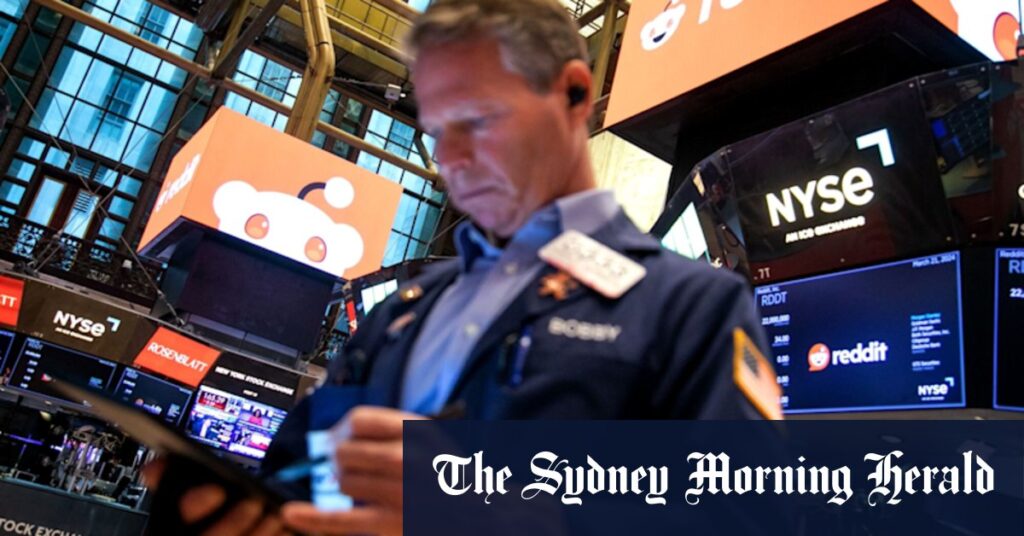
Shares in the Commonwealth Bank of Australia (CBA), the nation’s largest lender, fell by 5.4% despite reporting a robust $10.25 billion in cash profits for the past financial year. The decline came as the bank’s results, although meeting expectations, failed to invigorate further gains in its stock price, which had been on a rally for several months.
The other major Australian banks followed suit, with National Australia Bank dropping 2.6%, Westpac falling 2.1%, and ANZ Bank slipping 0.2%. Meanwhile, AGL shares plummeted 13.1% after the company reported a $98 million net loss and a 21% decrease in underlying net profits, attributing the decline to lower wholesale electricity prices and strategic decisions not to fully pass on higher costs to consumers.
Market Reactions and Analyst Insights
Despite a promising outlook for the local share market following record-breaking performances on Wall Street, the focus remained on CBA’s financial results. Analysts have been skeptical about CBA’s high valuation, with many maintaining “sell” recommendations despite a 37% increase in the bank’s share price over the past year.
UBS banking analyst John Storey commented, “The investment case for CBA hinges around the bank being in a strong position and the market assessing if the strongest in the sector can get stronger.” He cautioned that investors might be disappointed by the lack of a bullish outlook and the absence of rising demand in the bank’s key retail business.
“CBA trades at a significant premium to our valuations and to its key peers,” warned Matthew Davison, portfolio manager at Martin Currie Australia, highlighting a disconnect between the bank’s market value and its return on equity and growth trends.
Wall Street’s Optimism on Inflation
The subdued performance of the ASX contrasted sharply with the buoyant mood on Wall Street, where the S&P 500 climbed 1.1% to reach a new all-time high. The Dow Jones and Nasdaq also saw significant gains, rising 1.1% and 1.4%, respectively. This surge was fueled by optimism surrounding the latest US inflation report, which suggested that the Federal Reserve might have room to cut interest rates in September.
The report from the Bureau of Labor Statistics indicated moderate increases in consumer prices in July, with some tariff-sensitive goods like household furniture experiencing significant price hikes. This mixed data has led to a shift in market expectations, with traders now seeing a 94% chance of a rate cut by the Federal Reserve, up from 86% the previous day.
According to data from CME Group, traders are increasingly betting on a rate cut, which would mark the first such move by the Fed this year.
Global Economic Implications
Lower interest rates are generally seen as a boon for investment and economic growth, as they reduce borrowing costs for households and businesses. President Donald Trump has been vocal in his calls for rate cuts to stimulate the economy, often criticizing the Fed’s chair in the process. However, the Fed has been cautious, wary of the potential for Trump’s tariffs to exacerbate inflation.
Globally, other central banks have been lowering interest rates, with Australia’s Reserve Bank cutting rates for the third time this year. This trend reflects a broader concern about slowing economic growth and the need for monetary policy to provide support.
In the corporate sector, Intel’s stock rose 5.6% following positive remarks from President Trump about its CEO’s “amazing story,” a notable shift from his previous demand for the CEO’s resignation.
The developments on Wall Street and in the Australian market highlight the complex interplay between corporate earnings, economic indicators, and investor sentiment. As the global economic landscape continues to evolve, market participants will be closely watching central bank actions and geopolitical developments for further cues.






